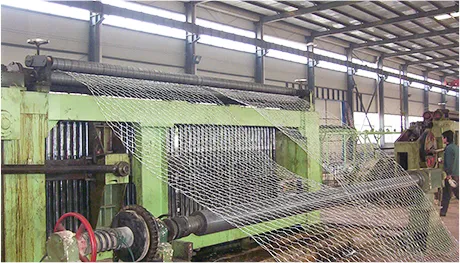-
 Phone:
Phone: -
 Email:
Email:

rockfall netting
The Importance of Rockfall Netting in Landscape Management
Rockfalls can pose significant risks to infrastructure and human safety, particularly in mountainous and hilly regions where natural erosion processes constantly shape the landscape. To mitigate these risks, engineers and environmentalists have increasingly turned to innovative solutions, one of which is rockfall netting. This protective measure is crucial in preserving both the natural environment and human settlements.
Understanding Rockfall Netting
Rockfall netting is a system designed to catch falling rocks and debris, preventing them from tumbling down slopes and impacting roads, buildings, and other structures below. Typically made from high-strength steel wire or synthetic materials, the netting is installed on slopes that are prone to rockfalls. The purpose of the netting is not only to protect infrastructure but also to stabilize slopes, reducing the risk of larger landslides or further erosion.
How Rockfall Netting Works
The installation of rockfall netting involves several steps. First, engineers conduct a thorough assessment of the area to identify potential hazards and determine the most effective placement for the nets. The nets are then anchored into the ground and tensioned to form a barrier that can withstand the forces exerted by falling rocks.
When a rock or debris dislodges from a slope, it is caught by the netting, which absorbs the energy of the fall. This action prevents the debris from reaching critical areas below and allows for the safe management of any collected rocks over time, reducing the need for constant maintenance and cleanup.
Benefits of Rockfall Netting
Rockfall netting offers numerous benefits that extend beyond immediate safety measures. First and foremost, it helps protect lives by preventing rockfalls from reaching populated areas or busy roads. This safety aspect is paramount in regions where tourism and transportation are heavily reliant on mountain passes and scenic routes.
rockfall netting

Additionally, rockfall netting can reduce the economic burden on local governments and organizations tasked with maintaining safe passages through mountainous terrain
. By minimizing the occurrence of rockfalls, authorities can reduce cleanup costs and the need for frequent repairs to infrastructure such as highways, railways, and utility lines.From an environmental perspective, rockfall netting helps maintain local ecosystems by limiting erosion and preserving the natural habitat that could otherwise be affected by falling debris. This aspect is especially important in sensitive environments where wildlife relies on stable geological formations for their survival.
Challenges and Considerations
Despite its many benefits, rockfall netting is not without challenges. The installation process can be complex and costly, particularly in remote areas where access is difficult. Furthermore, the effectiveness of the netting depends heavily on proper design and installation; poorly configured systems may not provide adequate protection.
Regular maintenance is also essential to ensure the nets function as intended over time. This upkeep can involve inspections, repairs, and replacements of sections of the netting that may degrade due to weather conditions or continuous impacts.
The Future of Rockfall Mitigation
As technology continues to advance, the future of rockfall mitigation looks promising. Innovations in materials, such as the development of synthetic fibers that offer increased durability and resistance to environmental wear, are enhancing the effectiveness of rockfall netting systems. Furthermore, integrating smart technology, such as sensors to detect rock movement and potential hazards, could revolutionize the way we manage rockfalls, allowing for proactive measures rather than reactive responses.
In conclusion, rockfall netting is an essential component of modern landscape management, offering a sustainable solution to mitigate the risks associated with rockfalls. While it faces challenges, the benefits it provides in terms of safety, economic savings, and environmental protection make it a worthy investment in many regions around the world. As we continue to adapt to changing environmental conditions and urban pressures, rockfall netting will remain a critical tool in ensuring the safety and integrity of our infrastructures and natural landscapes.
-
Wire Mesh for Every Need: A Practical SolutionNewsJul.25,2025
-
Steel Fences: Durable, Secure, and Stylish OptionsNewsJul.25,2025
-
Roll Top Fencing: A Smart Solution for Safety and SecurityNewsJul.25,2025
-
Cattle Farm Fencing Solutions for Maximum SecurityNewsJul.25,2025
-
Affordable Iron Binding Wire SolutionsNewsJul.25,2025
-
Affordable Galvanized Wire SolutionsNewsJul.25,2025
-
Wire Hanger Recycling IdeasNewsJul.25,2025








